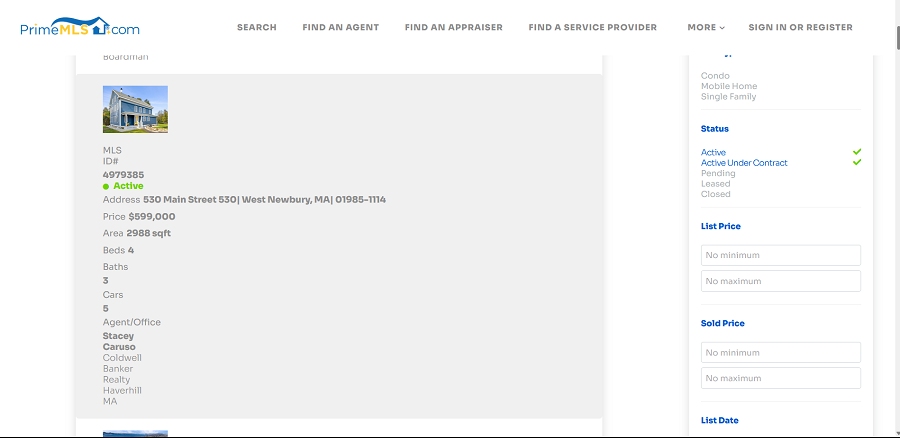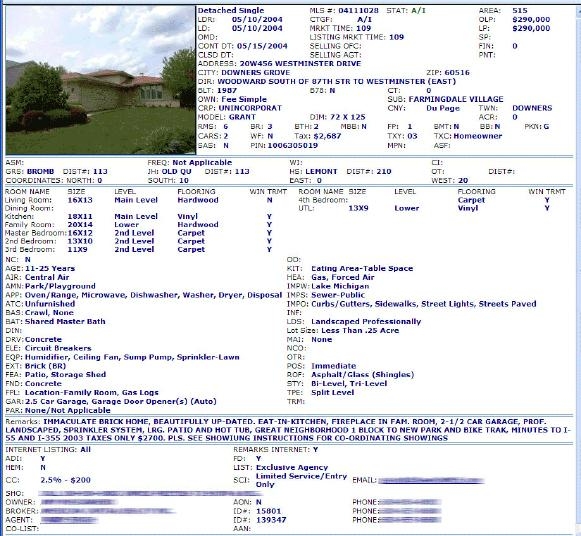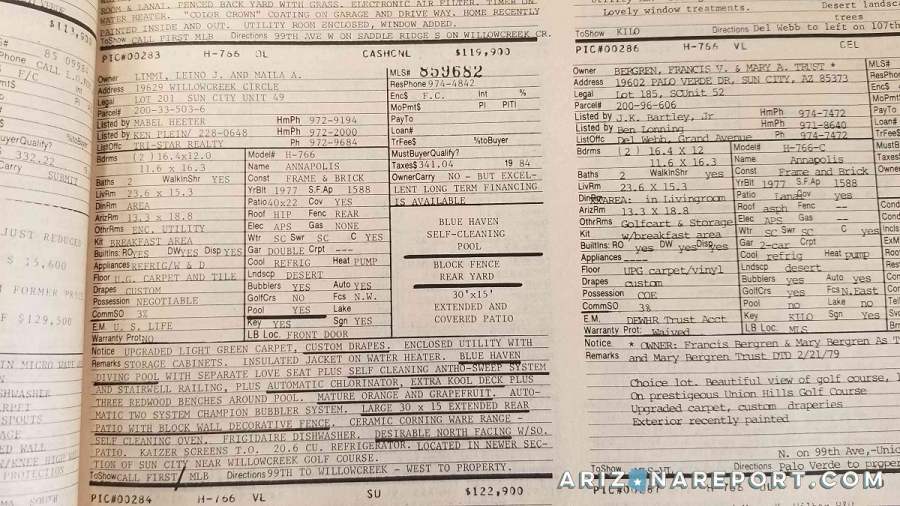The Multiple Listing Service (MLS) is a database of current and historic real estate listings in local areas. It is a tool real estate professionals use to share information about properties that have sold, are currently for sale, are under contract, or have expired listings. The National Association of Realtors (NAR) or local real estate professionals create, maintain, and pay for this database. We’ll answer the question “what is MLS in real estate?” and discuss its benefits and alternatives. Read on to explore how it promotes greater cooperation between listing and buyer’s agents who work at different brokerages.
How the Multiple Listing Service Works & How to Get Access
The MLS provides data about properties in various neighborhoods, including listing descriptions, pictures, pricing, and information on each home’s square footage and features. Only licensed brokers and agents have access to an MLS, and they must pay dues or a membership fee to access each MLS. The price to access the MLS varies based on your location. Here in New Hampshire and Massachusetts, it is around $90 quarterly, whereas in New Jersey, the MLS costs about $200 a year. Even though each MLS may have its distinct practices, most adhere to the guidelines established by the National Association of Realtors (NAR).

PrimeMLS covers properties in New England. (Source: PrimeMLS)
When agents sign an exclusive listing, they enter photos and property information into the multiple listing service. Once a property is listed in the MLS, buyer’s agents can access the information and arrange showings for their clients. This timeliness ensures that crucial data about a property is shared between the two parties.
All agents who are members of the multiple listing real estate service can co-broke any listing on the MLS. For instance, two agents or brokers can view a shared listing, work together to complete the transaction, and split the commission. This scenario involves one agent representing the seller and the other representing the buyer.
Did you know?
Real estate agents refer to their specific system as “The MLS.” However, there is more than one active database in the United States. Although numbers fluctuate, there are currently 952 MLS systems certified by Real Estate Standards Organization (RESO). Each regional MLS has its listings; agents pay dues to list and access other agents’ listings on the MLS.
Information the MLS Provides to Agents & Brokers
The MLS is typically the hub for the most accurate, up-to-date, and comprehensive property details. Agents can find information like the square footage and type of property. Furthermore, they can also learn about a home’s appliances, annual taxes, utilities, showing procedures, renovations, and expired and foreclosure listings. Agents and appraisers can research this information to calculate home valuations and prepare comparative market analysis (CMA) reports.

Multiple Listing Service example
The multi-listing real estate options include details about a property’s history on the market. Real estate agents can see when it was listed, past sale prices, the owner’s name, and the listing agent’s name and contact information. Although not all fields are required and may not be available on each listing, it’s still an excellent tool to research a property to prepare it for sale or answer a buyer’s questions.
Does the Multiple Listing Service Contain All Listings?
The real estate multiple listing service typically contains a comprehensive database of properties listed by real estate agents who are members of the MLS. However, it does not include every property for sale. Some sellers choose not to list their homes on the MLS for privacy reasons or to explore alternative selling methods. Additionally, certain properties, such as for sale by owner (FSBO) listings and foreclosures, might not be part of the MLS database. Agents should have a plan for managing and marketing listings that don’t get added to the MLS.
The MLS also may not include pocket listings—properties intentionally kept off the public market and shared only within a select network of agents. These exclusive listings are often used for privacy or to test the market before broader exposure. While the MLS offers a comprehensive view of available properties, the presence of pocket listings and other off-market options means it doesn’t capture every property for sale.
History of the MLS
Before the MLS, real estate brokers and agents would gather regularly at local association offices to trade information about homes they were trying to sell, hoping this network could help connect them with buyers. After discovering that this ad hoc system lacked efficiency, they agreed to compensate the listing brokers, and the first MLS was born in the late 1800s.

Original MLS book (Source: The Arizona Report™)
At that time, the National Association of Real Estate Exchanges, now known as the National Association of Realtors (NAR), endorsed this system by all agents in 1908. From then, it evolved into the modern system in use today—a comprehensive property listing database that is online and fully searchable by several filters, including price, neighborhood, and home features.
Today, through nearly 1,000 MLS databases, real estate brokers share information on listed properties and invite other agents to cooperate in the sale in exchange for compensation if they produce the buyer. It benefits buyer and seller agents in various ways (listed below) and has become a cornerstone for real estate agent success.
Benefits of Using a Multiple Listing Service
The MLS was first created to share listing information between agents quickly. Today, successful agents leverage the MLS to access comprehensive property data and offer more precise insights into individual properties and the local real estate market. This efficiency ensures the delivery of accurate and in-depth information to enhance the overall client experience.
Here are more ways on how to use MLS as a realtor:
- Create a comparative market analysis (CMA)
- Gain listing leads and accurately price properties
- Review expired listing data for comparison or lead generation
- Build trust and provide a premium service to your clients, leading to referrals and repeat business
- Gives real estate agents a marketing edge
- Speeds up listing syndication to popular online platforms
- Levels the playing field by not giving the advantage to large real estate brokerages over small or individual brokers
- Offers scheduling tools for appointments and communicating feedback
If you’re curious on how to get access to MLS databases, first, you need to belong to a local real estate board. If you’re an agent, your principal broker usually has membership to local real estate boards, and you can join the same ones by paying the annual dues and fees. The general public cannot join the MLS.
Alternatives to Using the MLS
When a property is listed by an MLS member agent, it gets shared on well-known sites, such as Realtor.com and Zillow. But here’s the thing—not all agents or brokers are part of the MLS. If you’re not in the MLS, no worries. You can still showcase your property on numerous websites. The catch? Listing each site separately requires a bit more effort. Unlike the MLS, where syndication sites automatically catch updates, here are alternative multiple listing real estate service options to explore.
Providers | |||
|---|---|---|---|
Best For | Real estate agents who want to generate sales leads per location | Agents and brokers looking to generate leads and advertise on a single platform | Real estate professionals seeking affordable pricing structure for property advertising |
Features |
|
|
|
Learn More |
Multiple Listing Service Statistics
Now that we’ve covered what is MLS in real estate, here are some interesting facts about the multiple listing service:
- According to the National Association of Realtors (NAR), 3% of for sale by owner (FSBO) sellers marketed their home on an MLS website.
- RESO states there are around 600 MLS in the world, mostly in North America, but that number is quickly growing in Central and South America, Europe, and West Asia. As of October 2023, there are around 540 MLS systems in the U.S. and 35 in Canada.
- The country’s two largest Multiple Listing Services are the California Regional MLS (CRMLS) and Bright MLS. These two combined with over 200 members to collaborate on technology solutions for the MLS industry.
- According to the National Association of REALTORS®, over 80% of homes sold in the U.S. are sold on an MLS.
- Homes displayed with an aerial shot are 68% likelier to sell.
Frequently Asked Questions (FAQs)
Yes, listing in the MLS is crucial for agents. It enhances property visibility, reaching a wide audience of potential buyers through other agents and syndication to popular real estate websites. The MLS fosters collaboration among agents and facilitates efficient property transactions. Agents benefit from the exposure, networking opportunities, and streamlined processes the multiple listing real estate service offers, making it a valuable tool for success in the real estate industry.
MLS listings are real estate properties shared on the multiple listing service, providing a centralized database for homebuyers and sellers through their agents. These comprehensive listings include essential property details, aiding in informed decision-making. Buyers can access a diverse range of homes, while sellers benefit from increased exposure. The MLS serves as a vital tool, connecting real estate professionals and facilitating efficient property transactions in the market.
The MLS is not a single website, but rather a collective database used by real estate professionals to share property listings. However, many local real estate associations and brokerages have MLS websites where agents can access and manage property listings. To find MLS listings in a specific area, you would typically visit the website of the local real estate association or work with a licensed real estate agent who has access to the MLS database.
The multiple listing service (MLS) means widespread exposure for houses, as properties are showcased to a broad network of agents and potential buyers. MLS listings provide crucial details, aiding informed decision-making for real estate transactions. This exposure attracts more interested parties and fosters agent collaboration, streamlining the selling process. Ultimately, the multiple listing real estate service enhances the market visibility of houses, contributing to successful and efficient real estate.
Bottom Line
What is MLS in real estate? It is a shared database of property listings created, maintained, and paid for by real estate professionals for the exclusive use of real estate agents and brokers. Although there are alternative real estate platforms, the MLS provides incomparable data accuracy and exclusivity, making it a vital tool for real estate professionals.